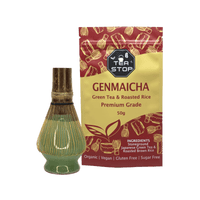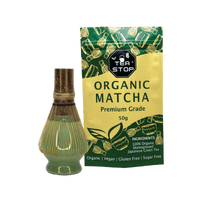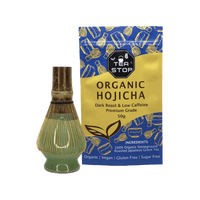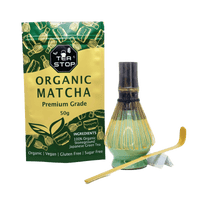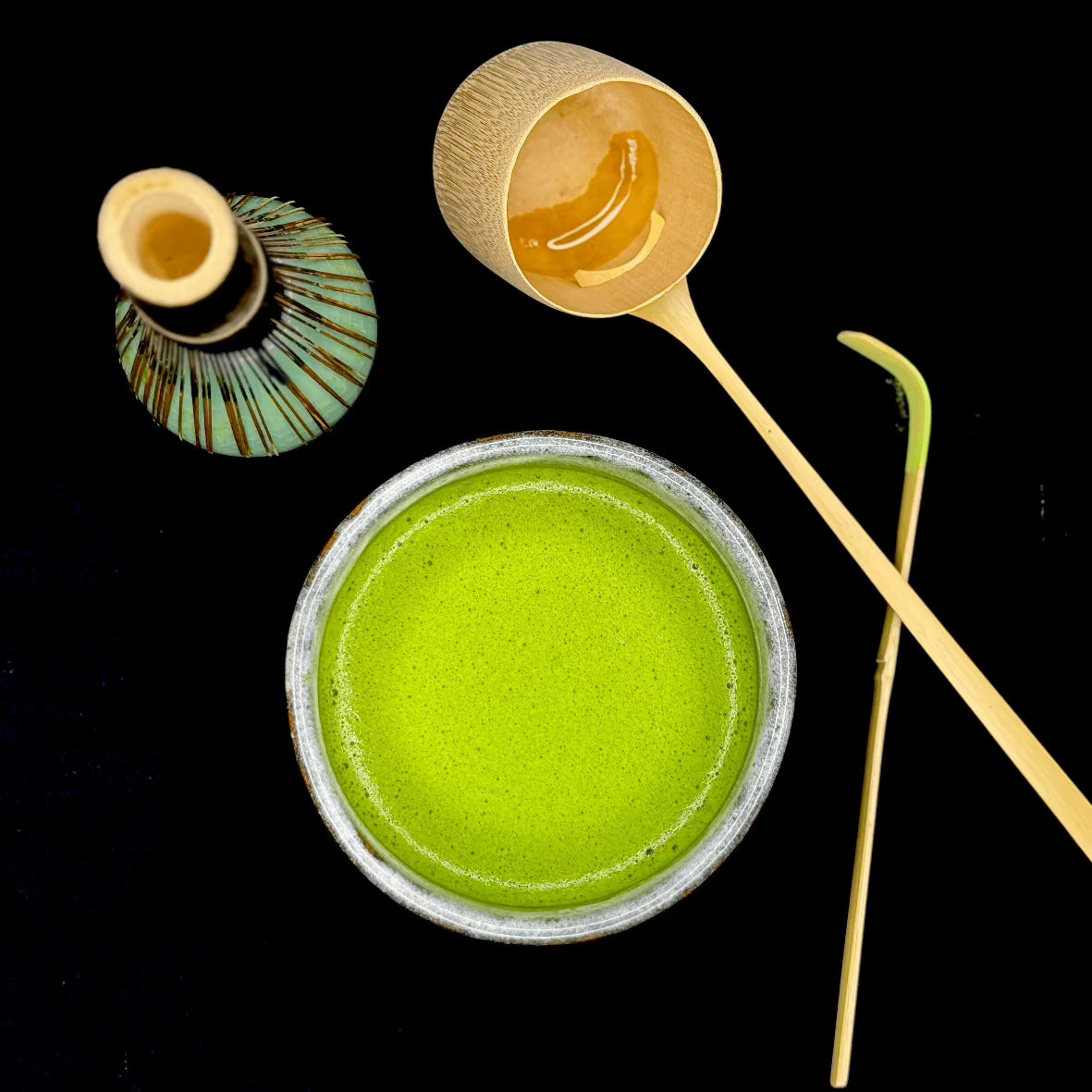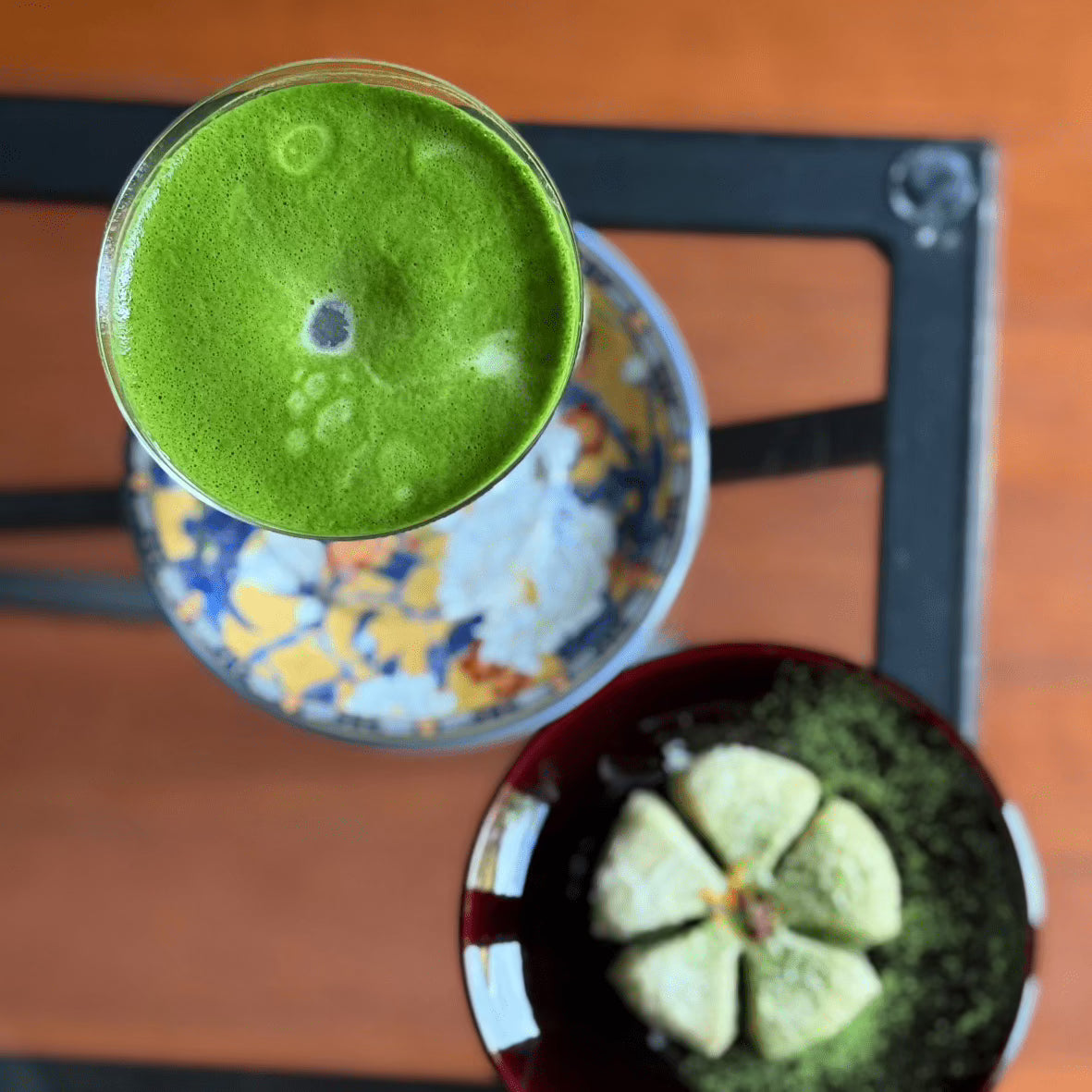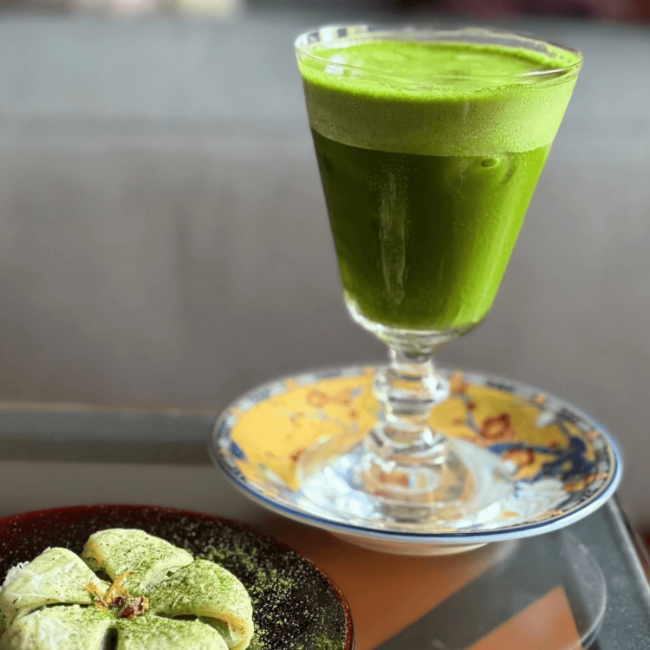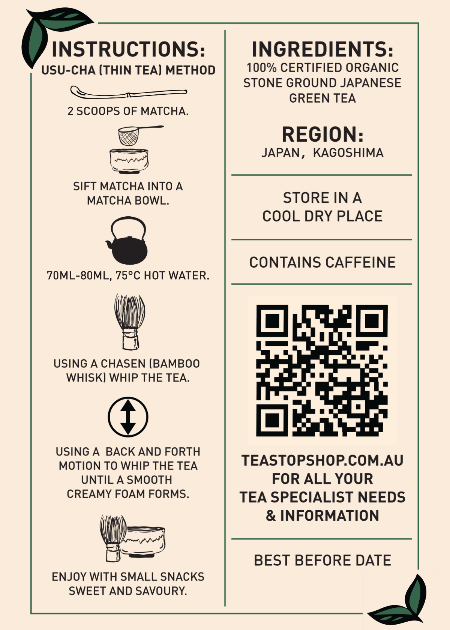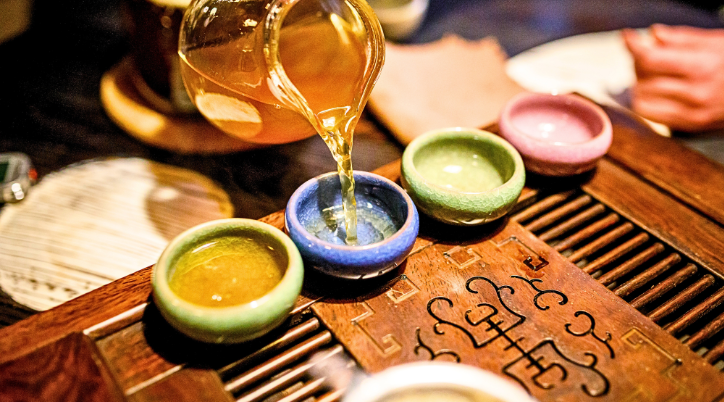
Rooibos Tea: How to Brew It Perfectly Every Time
Share
Rooibos tea has become a beloved choice in Australia's tea culture, known for its focus on wellness and mindful living. This herbal tea, grown in South Africa's Cederberg Mountains, is naturally caffeine-free, making it a soothing alternative to regular teas and a popular choice for rooibos tea for sleep. Its rich antioxidants and gentle flavour appeal to Australians seeking beverages that support both relaxation and gut health.
The charm of rooibos goes beyond its wellness benefits. It is forgiving when it comes to brewing, making it easy for beginners and experienced tea lovers alike to enjoy a perfect cup.
The Two Types of Rooibos Tea
There are two main types of rooibos tea that dominate the market:
- Red Rooibos: This variety undergoes oxidation during processing, resulting in a deep amber colour and naturally sweet, fruity notes reminiscent of honey and vanilla.
- Green Rooibos: Unlike red rooibos, green rooibos remains unoxidized, preserving its lighter colour and delivering earthy, grassy flavours similar to yerba mate.
By knowing how to brew rooibos tea correctly, you can fully appreciate the unique flavours of each variety. This knowledge will help you create delicious cups of tea that showcase this South African gem's charm—an essential addition to any Australian kitchen.
Understanding Rooibos Tea Varieties
Rooibos tea comes in two main types, which are different from each other based on how the leaves are processed after they are picked. The type of rooibos you choose will affect things like the colour of the tea and the flavours you experience when you drink it. Understanding these varieties is also the first step toward unlocking the many Rooibos Tea Benefits that make this herbal infusion so treasured.

1. Red Rooibos
Red rooibos is made using a process similar to how black tea is made. Here's how it works:
- After the leaves are harvested, they are bruised to release their juices.
- The bruised leaves are then left out in the sun to ferment, which changes their chemical composition.
- Finally, the leaves turn into a deep amber colour due to oxidation.
This process gives red rooibos its unique flavour profile:
- Naturally sweet taste with fruity undertones
- Reminiscent flavours of honey and vanilla
- Gentle hints of caramel and a smooth finish
Red rooibos is known for being very approachable, making it a great choice for people who are new to herbal teas.
2. Green Rooibos
Green rooibos takes a different approach compared to red rooibos. Instead of undergoing oxidation like black tea or red rooibos, these leaves go through a steaming process immediately after being harvested.
Here's what happens during production:
- Freshly picked leaves skip any bruising or fermentation steps.
- They are quickly steamed to stop any enzymatic changes from occurring.
As a result of this unique processing method, green rooibos has distinct characteristics:
- Pale golden colour when brewed
- Flavour profile that leans towards grassy notes
- Subtle astringency reminiscent of yerba mate
Compared to its red counterpart, green rooibos offers a lighter and crisper taste experience with added complexity.
Brewing Techniques for Different Varieties
When it comes to brewing these two varieties of rooibos tea, there are slight adjustments you can make based on their individual preferences:
Red Rooibos Brewing Tips
- Use longer steeping times (around 7-10 minutes) for red rooibos.
- Higher water temperatures (around 95°C/203°F) work well too.
- This method helps bring out deeper sweetness without introducing any bitterness.
Green Rooibos Brewing Tips
- For green rooibos, aim for slightly shorter steeping times (around 5-7 minutes).
- Use lower water temperatures (around 85°C/185°F) to preserve its delicate characteristics.
- Avoid oversteeping as it may lead to overly grassy flavours dominating your cup.
By understanding these nuances in both varieties' production processes and brewing techniques, you'll be able to fully appreciate the diverse range of flavours that each type has to offer!
Loose leaf rooibos delivers a depth of flavour that pre-packaged tea bags simply cannot match. The leaves in bags are often broken into smaller particles, which limits the full expression of oils and compounds during steeping. Whole, loose leaves unfurl completely in hot water, releasing their authentic character and allowing you to control the strength of each cup with precision.
Your brewing equipment shapes the ritual itself:
- Teapot: A ceramic or glass vessel that holds heat well and allows leaves room to expand
- Tea infuser: A mesh ball or basket that contains leaves while permitting water flow
- Cup with built-in strainer: Perfect for single servings and mindful, intentional brewing
- Measuring spoons: Essential for maintaining consistent ratios between leaves and water
A kitchen scale offers even greater accuracy for those who prefer weighing their tea, though volume measurements work beautifully for everyday brewing. These simple tools create the conditions for rooibos to reveal its full spectrum of flavour, cup after cup.
Step-by-Step Guide to Brewing Rooibos Tea Perfectly
With your equipment ready, the process of brewing rooibos tea becomes a simple, rewarding ritual. The beauty of this South African herbal tisane lies in its forgiving nature—there's no need to stress over precise timing like you might with delicate green tea.

1. Heat Your Water to a Full Boil
Bring your fresh, filtered water to a complete boil, reaching 200-212°F (100°C). Unlike green or white teas that require cooler temperatures, rooibos thrives with fully boiling water, which helps extract its rich, naturally sweet compounds.
2. Measure Your Rooibos Leaves
The ideal tea-to-water ratio starts at 1 to 1.5 teaspoons of loose leaf rooibos per 8 ounces of water. Preparing a larger pot? Scale accordingly—3 teaspoons for 16 ounces, or 6 teaspoons for a full 32-ounce teapot. Adjust based on how robust you prefer your brew.
3. Steep with Patience
Pour the boiling water directly over your rooibos leaves and allow them to steep for 5 to 10 minutes. This steeping time range gives you control over intensity: five minutes yields a lighter, more delicate cup, while ten minutes produces a deeper, more full-bodied infusion. The remarkable quality of rooibos is its resistance to bitterness—even extended steeping won't create the harsh, astringent notes common in over-brewed black tea.
4. Strain and Serve
Remove the leaves using your strainer or lift out your infuser basket. Your perfectly brewed rooibos is now ready to enjoy.
Mastering the Art of Rooibos Brewing Every Time!
The beauty of learning how to brew rooibos tea lies in its forgiving nature and endless possibilities for personalisation. Your journey toward achieving consistent herbal tea brewing results begins with understanding the basics, then letting your palate guide you.
Explore Different Varieties
Start by exploring both red and green varieties to discover which resonates with your taste preferences. You may find that red rooibos becomes your morning companion, while green rooibos suits your afternoon ritual.
Experiment with Brewing Variables
Don't hesitate to play with steeping times, leaf quantities, and temperature variations until you develop your signature brew.
Embrace Creativity in Flavouring
Play with steeping times, leaf quantities, and water temperatures until you discover your signature brew. Each adjustment can bring out different nuances of flavour.
- Honey in tea amplifies rooibos's inherent sweetness while adding floral depth and a silky mouthfeel
- Sugar provides clean sweetness without competing with the tea's natural flavour notes
- Milk in rooibos creates a creamy, comforting beverage reminiscent of a caffeine-free latte, with the tea's tannins binding to milk proteins for smooth richness
- Lemon brightens the cup with citrus acidity, cutting through sweetness and highlighting fruity undertones
- Vanilla extract (just a few drops) enhances the tea's warm, dessert-like qualities
- Plant-based creamers offer dairy-free creaminess, with oat or almond varieties pairing particularly well
Iced and Cold Brew Preparations
Warm weather calls for chilled rooibos preparations. For iced rooibos tea, use 2 to 3 teaspoons per 8 ounces of water, steep as usual, then strain directly over ice-filled glasses. The concentrated brew maintains flavour intensity as ice melts.
The cold brew method produces remarkably smooth results: combine loose leaf rooibos with cold filtered water in a pitcher (using standard measurements), refrigerate for 8 to 12 hours, then strain. This gentle extraction yields a naturally sweet, mellow infusion without any harsh notes.
Health Benefits of Rooibos Tea
Beyond its rich flavour and versatility, rooibos offers genuine wellness advantages that make it stand out among herbal infusions.
1. Caffeine-Free Drinks in Australia
Caffeine-free tea benefits shine brightest for those seeking a calming ritual without sleep disruption. Unlike traditional teas, rooibos contains zero caffeine naturally, making it suitable for evening enjoyment, pregnancy, or anyone sensitive to stimulants. You can sip it throughout the day without experiencing jitters or affecting your rest patterns.
2. Low-calorie beverage
The low-calorie beverages category welcomes rooibos with open arms—each cup contains merely 2-4 calories when enjoyed plain. This makes it an intelligent choice for those mindful of their dietary intake while still craving something flavorful and satisfying.
3. Antioxidants in rooibos
Rooibos Tea Antioxidants include unique compounds like aspalathin and nothofagin, which research suggests may help protect cells from oxidative stress and reduce inflammation in the body. These polyphenols work quietly to support your body's natural defence systems.
4. Potential cardiovascular benefits
Studies have explored rooibos's potential cardiovascular benefits, with some research indicating it may support heart health through improved circulation and cholesterol balance. While more research continues, the existing findings show promise.
5. Digestive health support
Digestive health support comes naturally to rooibos, with its gentle, soothing properties that many find helpful for occasional stomach discomfort. The absence of tannins means it won't interfere with iron absorption, unlike traditional teas, making it a thoughtful choice for those managing their mineral intake.
Choosing Quality Rooibos in Australia
Look for Organic Rooibos Tea in Australia to ensure freshness and authenticity:
- Specialty tea shops
- Health food stores
- Online retailers with transparent sourcing and organic certification
Filtered or spring water helps unlock the tea’s natural honey-like sweetness, while high-quality leaves ensure every cup is rich in antioxidants.
Troubleshooting Common Rooibos Brewing Mistakes
Rooibos forgives most brewing missteps, yet recognising when something's gone awry helps you dial in your perfect cup.
Signs of Under-Steeped Rooibos
Under-steeped rooibos appears pale orange or light amber, tasting thin and watery with barely perceptible flavour notes. The brew lacks body and the characteristic sweetness remains muted. If you notice these signs, extend your steeping time to 7-10 minutes or increase your leaf quantity by half a teaspoon per cup.
Signs of Overbrewed Rooibos
Overbrewed rooibos presents differently than traditional teas. While it won't turn bitter, an excessively long steep (beyond 15 minutes) can produce an overly intense, almost medicinal flavour with a darker mahogany colour. The natural sweetness becomes cloying rather than pleasant. Reduce steeping time to the 5-8 minute range for a more balanced profile.
Fixes for Weak Rooibos Tea
For a weak rooibos tea fix, consider these adjustments:
- Increase leaf quantity from 1 teaspoon to 1.5 or 2 teaspoons per cup
- Ensure water reaches a full rolling boil before pouring
- Extend steeping time incrementally—try 8 minutes instead of 5
- Check your rooibos freshness; old leaves lose potency and flavour
Bland brews often result from using too little leaf material rather than insufficient steeping time. Start by doubling your usual amount and maintaining your preferred steeping duration. This approach preserves the delicate flavour balance while achieving proper strength. Keep notes on your adjustments to replicate successful brews consistently.
FAQs (Frequently Asked Questions)
What equipment and ingredients are essential for brewing perfect Rooibos tea?
To brew perfect Rooibos tea, you need fresh, filtered water brought to a full boil, quality loose leaf Rooibos tea (1 to 1.5 teaspoons per cup), a teapot or infuser for steeping, and a strainer to remove leaves before serving. Using high-quality ingredients ensures the best taste experience.
How does the processing method affect the flavour profile of Red versus Green Rooibos tea?
Red Rooibos undergoes oxidation similar to black tea, resulting in a naturally sweet, nutty, and robust flavour. In contrast, Green Rooibos is unoxidized or minimally oxidised, offering a lighter, fresher taste with grassy and herbal notes.
Can Rooibos tea support digestive health and what compounds contribute to this benefit?
Yes, Rooibos tea supports digestive health due to its anti-inflammatory properties and presence of compounds like flavonoids that soothe the digestive tract and may alleviate stomach cramps and indigestion.
What are some creative flavouring options to enhance the natural sweetness of Rooibos tea?
To customise your Rooibos tea experience, consider adding ingredients such as vanilla pods, cinnamon sticks, honey, citrus zest, or fresh herbs like mint. These additions complement Rooibos's naturally sweet and nutty character for a unique and enjoyable brew.

